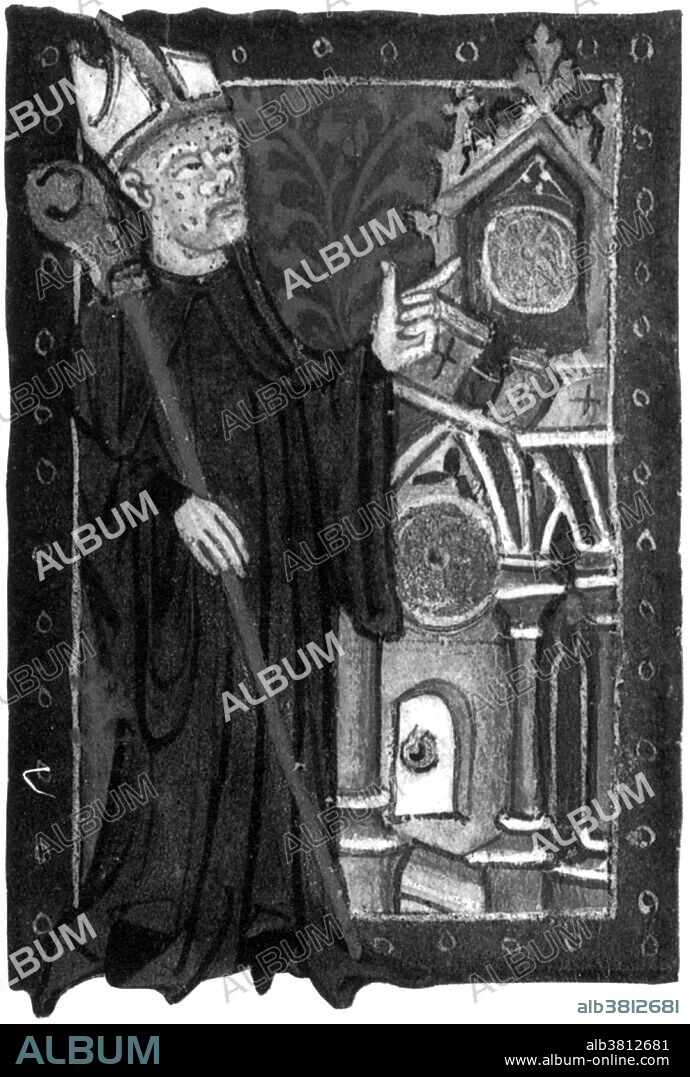alb3812681
Richard of Wallingford, English Mathematician

|
Añadir a otro lightbox |
|
Añadir a otro lightbox |



¿Ya tienes cuenta? Iniciar sesión
¿No tienes cuenta? Regístrate
Compra esta imagen.
Selecciona el uso:

Título:
Richard of Wallingford, English Mathematician
Descripción:
Ver traducción automática
Richard of Wallingford (1292-1336) was an English mathematician who made major contributions to astronomy, astrology and horology while serving as abbot of St Albans Abbey. He is best known for the astronomical clock he designed, while he was abbot, which is described in the Tractatus Horologii Astronomici (1327). The clock was completed about 20 years after Richard's death by William of Walsham but was apparently destroyed during Henry VIII's reformation and the dissolution of St Albans Abbey in 1539. His clock almost certainly was the most complex clock mechanism in existence at the time in the British isles, and one of the most sophisticated ones anywhere. He also designed and constructed a calculation device, known as an equatorium, which he called Albion. This could be used for astronomical calculations such as lunar, solar and planetary longitudes and could predict eclipses. This is described in the Tractatus Albionis. He published other works on trigonometry, celestial coordinates, astrology, and various religious works. He suffered from what was then thought to be leprosy (might have been scrofula or tuberculosis) and died in 1336.
Crédito:
Album / Science Source / New York Public Library
Autorizaciones:
Modelo: No - Propiedad: No
¿Preguntas relacionadas con los derechos?
¿Preguntas relacionadas con los derechos?
Tamaño imagen:
3150 x 4674 px | 42.1 MB
Tamaño impresión:
26.7 x 39.6 cm | 10.5 x 15.6 in (300 dpi)
Palabras clave:
ABADIA • ALBION • ARTE • ASTRONOMIA • ASTRONOMO • BLANCO Y NEGRO • CATOLICO ROMANO • CATOLICO • CIENCIA • CURA • DIBUJO • DISEÑADOR • EDAD MEDIA • EUROPEA • EUROPEAS • EUROPEO • EUROPEOS • FAMOSA • FAMOSO • FIGURA • GENTE • GRABADO EN MADERA • HISTORIA • HISTORICO • HOMBRE • HOMBRES • HOROLOGIA • ILUSTRACION • IMPORTANTE • INGLES • INVENTOR • LEPRA • MASCULINO • MATEMATICAS • MATEMÁTICO • MEDIEVAL • MONJE • OBRA DE ARTE • PERSONA • PERSONALIDAD • PERSONALIDADES • PLANCHA DE MADERA • RELOJ ASTRONOMICO • RELOJ • RETRATO DE HOMBRE • S. XIII • SACERDOTE • SACERDOTES • SIGLO XIII • SIGLO XIV • ST ALBANS • TRIGONOMETRIA • XILOGRAFIA
 Pinterest
Pinterest Twitter
Twitter Facebook
Facebook Copiar enlace
Copiar enlace Email
Email
